Compare Steam Deck vs Nintendo Switch: Which device should you choose?
Nintendo released its Switch handheld game console exactly seven years ago, bringing players back to the decade with classic games, but with improved graphics thanks to a powerful and modern hardware platform. than. Meanwhile, Steam Deck was launched more recently, in early 2022, providing hardware power powerful enough to run PC games or famous "Steam" titles.
Because both devices are aimed at mobile gaming needs, many gamers will start to wonder "which one is more suitable to choose". Should they go against the Nintendo Switch, the nostalgic device that will offer classic titles like Mario and The Legend of Zelda, or should they put their faith in a powerful handheld gaming device that can run PC games? Modern like Steam Deck?
Based on its own configuration and advantages, Steam Deck seems to be the device that will win, but comparison based only on internal hardware configuration is not enough. In this article, TipsMake will help you explore deeper into all aspects of these two handheld gaming devices, comparing both devices in every aspect to ensure users can choose the right device. the best fit for your gaming journey.
Steam Deck vs Nintendo Switch: Which device should I choose?
Technical specifications of the two devices
Before diving into the actual performance, display, battery life, or any other factors, it's important to understand the differences in the hardware configuration of both devices. The Steam Deck clearly has its advantages right from the start, but do you feel the need?
Steam Deck
Steam Deck uses a custom chip from AMD, specifically the AMD Van Gogh APU, which is a combination of a Zen 2-based CPU and an RDNA 2-based GPU. When it launched in early 2022, Zen 4 had not yet been released. released and Zen 3 is also quite new as the Steam Deck is still in the early design stages by Valve company.
The AMD Van Gogh chip has a total of four cores and eight threads, which in theory is enough to run almost any game available on Steam's Store. It may not be your top choice for optimal graphics settings, but almost any game you're playing on Windows can run well on the Steam Deck without any problems.
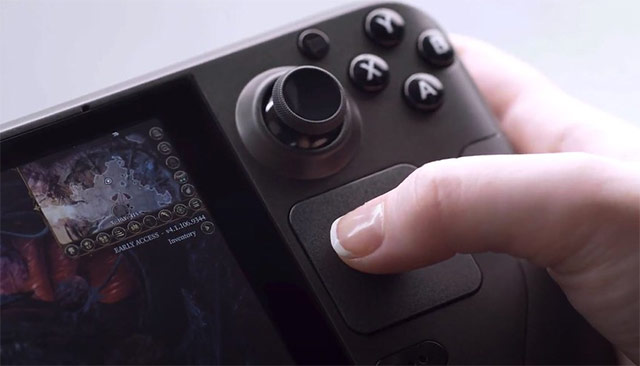
You can choose the Steam Deck version with an LCD or OLED screen, the OLED version has a significantly upgraded display to have higher contrast and more vibrant colors than the LCD version. It is also 30Hz faster than 60Hz LCD screens. However, the resolution remains the same at 1280x800p.
The total amount of RAM that users get in both versions is 16GB LPPDR5, and memory starts from 64GB eMMC up to 1TB NVMe SSD. Pricing varies depending on specifications and storage options the user initially selects.
Connections include a 3.5mm headphone jack, two microphones, Wi-Fi and Bluetooth connectivity along with a Type-C port that supports DisplayPort 1.4. Users also have stereo speakers if they don't want to use headphones.
Nintendo Switch
Nintendo Switch with Nintendo Switch Dock is considered to have significantly worse hardware than the Steam Deck. This is quite understandable because the Switch is also five years old and has its own proprietary operating system.
It's powered by a custom Nvidia Tegra RDNA 2 graphics.
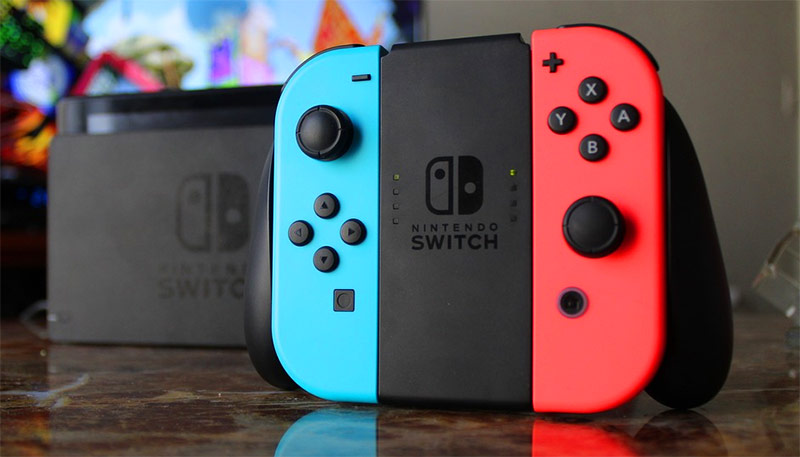
The total number of CPU cores on the Switch that users get is 4 and there is no Hyper-threading (Hyper-threading technology). RAM capacity is 4GB LPDDR4 running at 1600MT/s and storage options are 32GB or 64GB eMMC. While there is no NVMe SSD expansion option, the console allows users to add up to two terabytes of offsite storage.
Similar to the Steam Deck, the Switch also has two versions: LCD and OLED, with the OLED version being a bit more expensive, but having much better image quality than the LCD version. Unlike Deck, the screen's scanning frequency remains the same, as well as the resolution of both versions at 1280x720p. Finally, its connectivity features include a 3.5mm jack for you to plug in gaming headsets, Wi-Fi, Bluetooth, USB Type C and stereo speakers. In terms of performance, Nintendo Switch is considered to be lower than Steam Deck, but it certainly still runs well with the games currently available here.
Performance
Just by comparing the specs, it is clear that the Steam Deck is far superior and will be faster in terms of gaming performance. However, when comparing both devices, users may be a bit surprised to learn that the theoretical performance difference is not as different as when comparing the parameters.
Of course, Steam Decks' specs allow it to offer a higher frame rate, but performance also depends on title optimizations made specifically for both consoles.
Perhaps the most important factor, however, is to consider the titles these two devices have as both the Steam Deck and Switch's game libraries are very different. But there are still many popular games available on both devices and thanks to that, comparing gaming performance between these two machines will also become easier.
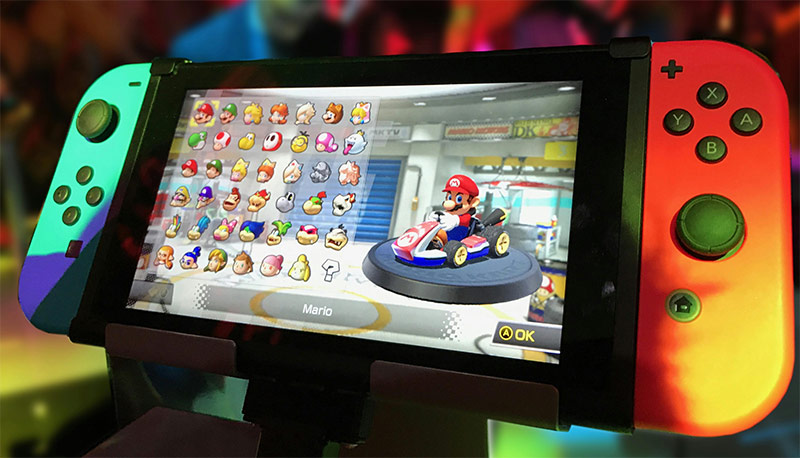
Among a series of titles like Borderlands, Bioshock Infinite, Doom 2016, Hot Wheels, and Crash Bandicoot, the Steam Deck was always able to deliver 60 FPS and better overall graphics than the Switch.
The Switch is considered to have dull game colors, not vibrant and realistic, many details are missing and does not exceed 30 FPS because it cannot handle all the details like Steam Deck. On the other hand, familiar titles like Stardew Valley, Terraria and Assassin's Creed II perform better on Switch and run at better frame rates, competing directly with Steam Deck.
It all boils down to how graphically intensive the user wants to play. Steam Deck will always be better for newer and more demanding titles. On Switch, light and simple games will be perfect for this gaming device.
Control
The Steam Deck has an inconvenient placement on the left-hand wheel, but this is to create space for the track pad, something the Nintendo Switch doesn't have. It has superior ergonomics and, despite being heavier, it doesn't tire the user's fingers.
The position of the thumb may be unfamiliar to those who are used to using Xbox and PS controllers. However, it will not be too difficult for you to get acquainted with the control mechanism of Steam Deck.
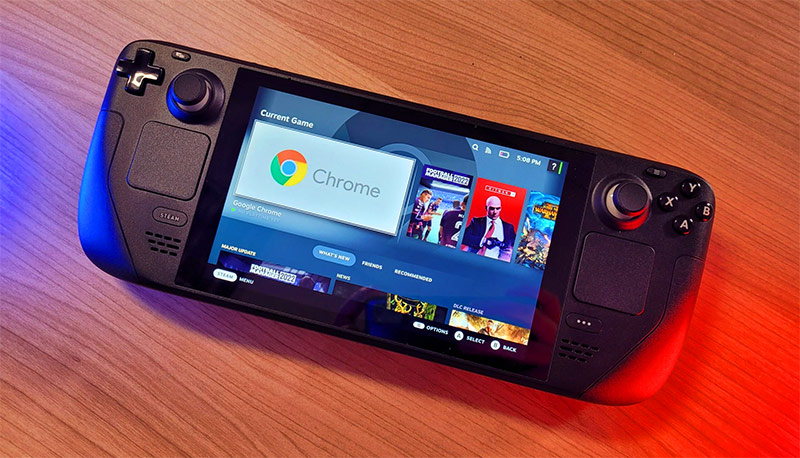
While the Switch's controller and buttons meet basic requirements, the D-Pad doesn't impress much. The large gap between the navigation buttons is not a pleasant experience in some titles. The D-Pad on the Steam Deck is certainly better, even if it is designed in a less than ideal position.
The trigger buttons on the Deck are also better and more convenient for users than on the Switch because they are Analog Triggers. The Digital Trigger button only has a value of 0 or 1 in the input. While with the Analog Triggers button, you can set more options in this button such as car brakes, booster when the car is running to accelerate or more. This is the clear advantage Steam Deck has over Switch.
Software support and game store
Steam Deck uses the proprietary SteamOS 3.0 operating system, while Nintendo Switch has its own Nintendo operating system. SteamOS is based on Linux and has evolved quite well compared to Nintendo, and Steam Deck also has a large library of games.
You will have about 4500 games on Switch, while on Steam Deck the number is over 73,000. This makes the Steam Deck significantly superior to the Nintendo Switch, especially since the Steam store typically receives newer games every day.
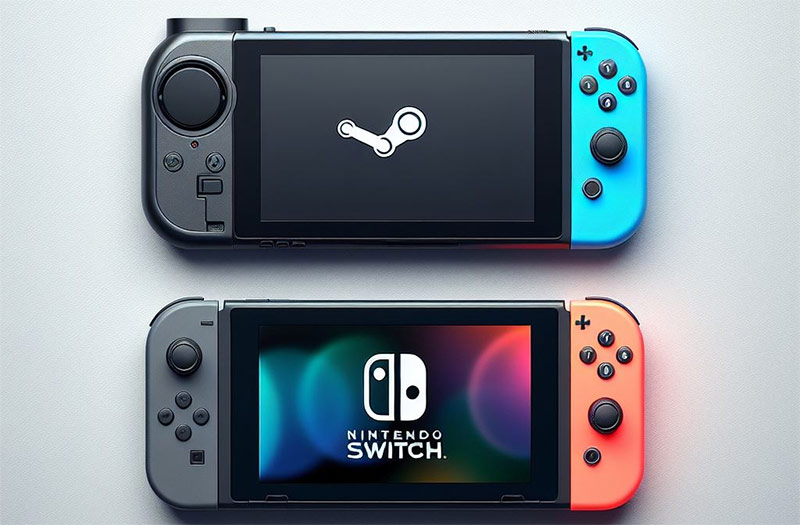
Portability
Portability is probably the main reason the Steam Deck and Nintendo Switch exist. These are easy to carry anywhere in a small bag or you can even reserve a slot for this gaming device in your pocket if it is a little larger than usual. Here, the Switch is the device that has the greater advantage because of its size.
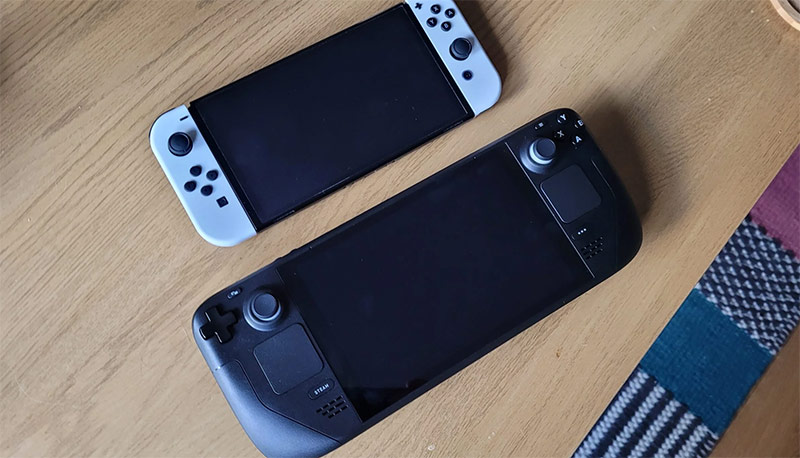
With dimensions of only about 203.1 x 102 x 13.9 millimeters and weighing about 300 grams, the Switch is almost twice as small as the Steam Deck. But carrying the Deck is not impossible when the dimensions of the Deck are only 29.72 cm in length, 11.68 cm in height and 4.9 cm in thickness.
As for weight, the Nintendo Switch weighs only 420 grams compared to the Steam Deck's 669 grams. The OLED versions of both systems are a bit lighter, but here the Switch also reduces weight by 30%, from 420 grams to just 322 grams. Steam Deck is "lazy" to exercise, so it only lost 19 grams of weight, equivalent to 5% of its weight.
Battery life
In terms of battery life, both of these handheld game consoles are "a nine, a ten". Although the Steam Deck has a larger battery capacity, actual usage time depends heavily on the type of game you play. Normally, both machines only last about 2-3 hours when playing continuously. The manufacturer advertises that it can play for up to 8-9 hours, but in reality. never mind! In general, when it comes to batteries, "no side is better than the other".
However, there is also a small difference. Steam Deck charges faster than Switch thanks to 45W fast charging support. The USB Type-C port on the Switch does not have this feature, which is a bit of a shame because Type-C technology developed after the Switch launched. The Steam Deck's full charge time only takes about 2.5 to 3 hours, while the Switch takes more than 3 hours to fully charge.
Price
The key issue is which device is more "tasty - nutritious - cheaper". Buying something 2-3 times better but the price is 3 times higher will not satisfy your needs. Although Steam Deck and Nintendo Switch do not run the same operating system or configuration, they are still direct competitors because they both serve the needs of "handheld gaming".
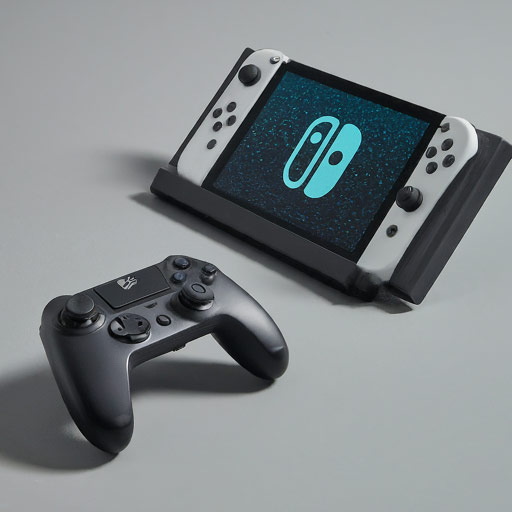
Nintendo Switch has versions including Lite, regular LCD and OLED. The most affordable Lite version costs only 3-4 million VND, the regular LCD version costs 5-6 million VND and the OLED version costs 8-9 million VND. Of course, configuration, software and connectivity also contribute to the price, but in general, the Switch is more "friendly" to most users' "wallets" than the Deck.
Conclude
In recent years, the handheld game console market has been "rising" with many new players jumping in, such as Ayaneo and Asus. However, Steam Deck and Nintendo Switch are still the best-selling "top sellers" thanks to their more affordable and popular prices. Although Steam Deck has sold nearly 5 million units, Switch is still far behind with nearly 140 million units sold by 2024.
However, this number also needs "careful consideration" because Steam Deck was born more than 5 years later than Switch. Thinking back to the time when the Switch first launched, this machine seemed to have no competitors. Now with ROG Ally and many other machines joining the game, the Switch's market pie is also "divided".
In short, compared directly with Switch, Steam Deck is confident with more powerful hardware, capable of fighting today's "hot" games, which is something that Switch can hardly do. Huge game library, "easy to use" operating system, diverse game store allows players to "dabble" more comfortably than Switch. Additionally, the Deck's superior connectivity, more "easy" storage options, and "more responsive" control feedback are a direct threat to the Nintendo Switch.
You should read it
- Nintendo Switch will continue to lack supply in 2022
- Valve's Steam Deck handheld game console, $400, can play PC games
- Ways to Power Off Nintendo Switch
- Things to know when using Windows drivers on Steam Deck
- How to fix Joy-Con error on Nintendo Switch
- How to install Windows on Steam Deck
- How to capture screen and record video on Nintendo Switch game console
- How to dual boot Windows and SteamOS on Steam Deck
- Official: Nintendo Switch can run Android
- How to update games on Nintendo Switch
- 9 tips and tricks for the Nintendo Switch
- The best Nintendo Switch games of 2021
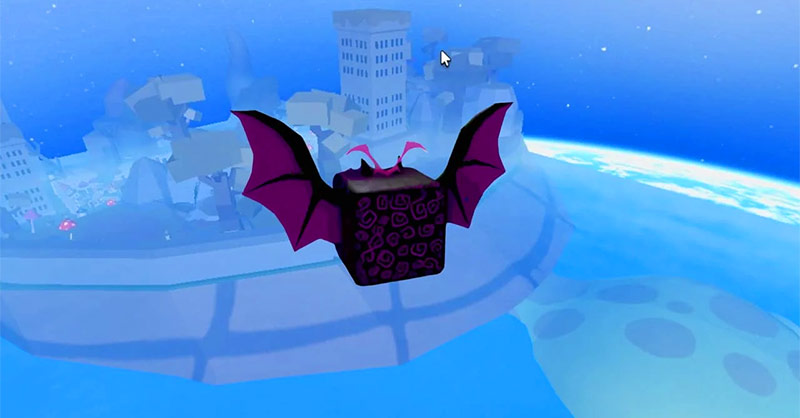





 Nintendo Switch will continue to lack supply in 2022
Nintendo Switch will continue to lack supply in 2022 Valve's Steam Deck handheld game console, $400, can play PC games
Valve's Steam Deck handheld game console, $400, can play PC games The 5 best SSDs for Steam Deck
The 5 best SSDs for Steam Deck Ways to Power Off Nintendo Switch
Ways to Power Off Nintendo Switch How to install Windows on Steam Deck
How to install Windows on Steam Deck 9 tips and tricks for the Nintendo Switch
9 tips and tricks for the Nintendo Switch